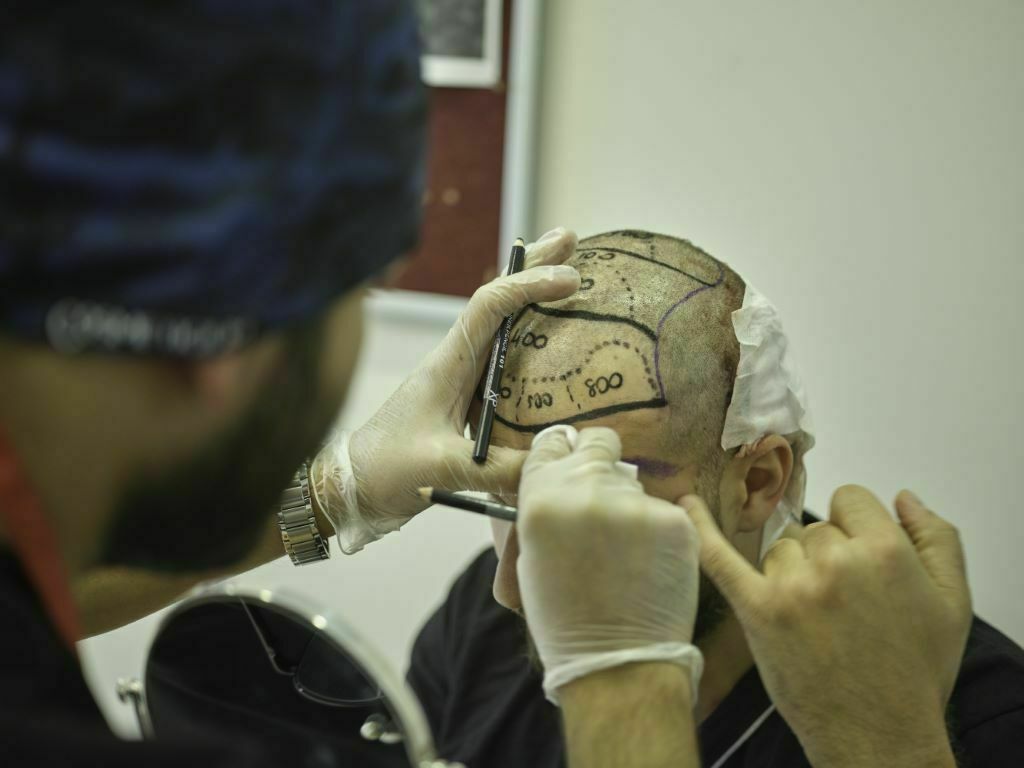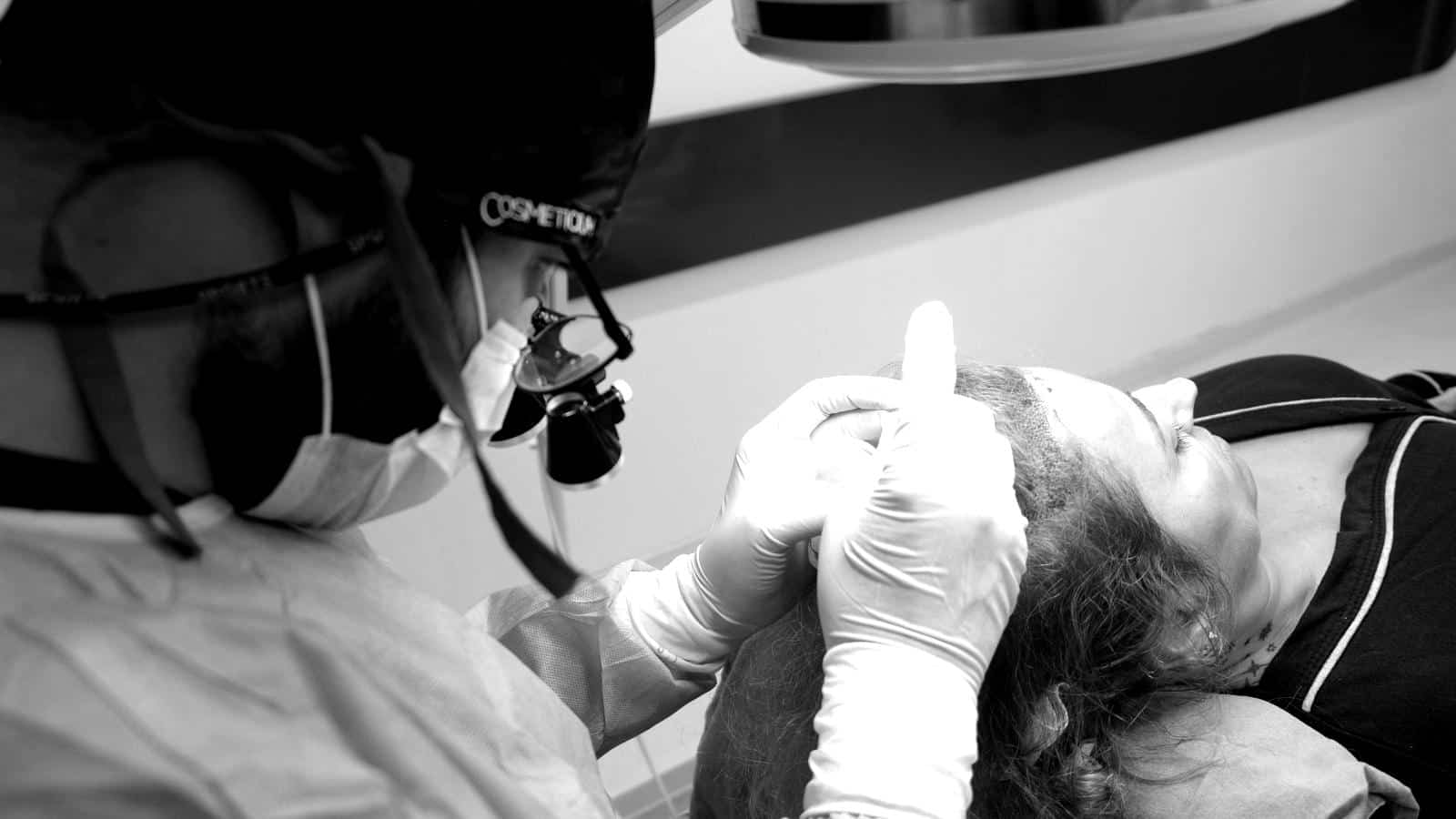Table of Contents
DHI vs FUE Hair Transplant: What You Need To Know Before Making a Decision
Hair loss is a common problem for many individuals, but thankfully there are two popular hair transplant methods – DHI and FUE – that can help. In this article, we’ll take a look at the differences between these two treatments, so you can make an informed decision about which one is right for you.
Introduction
If you’re considering a hair transplant, you may be wondering whether to go for the traditional strip method (DHI) or the newer follicular unit extraction technique (FUE). Both have their pros and cons, so it’s important to do your research before making a decision.
In general, DHI transplants are more expensive than FUE transplants, but they also tend to produce better results. DHI transplants involve harvesting a strip of skin from the back of the head, which is then divided into individual grafts. The grafts are then implanted into the balding areas of the head.
FUE transplants, on the other hand, involve taking individual hair follicles from the back of the head and transplanting them into the balding areas. One advantage of FUE over DHI is that it is less invasive and therefore has a quicker recovery time. However, FUE transplants can sometimes result in poorer quality grafts and a higher risk of infection.
So, which transplant method is right for you? Ultimately, it depends on your budget and your desired results. If you want the best possible results and are willing to pay more for them, then DHI may be the way to go. However, if you’re looking for a cheaper option with a quicker recovery time, then FUE may be a better choice.
What is DHI Hair Transplant?
There are two main types of hair transplant procedures: FUE (follicular unit extraction) and DHI (direct hair implantation). Both procedures involve taking hair from a donor area on the scalp and transplanting it to the recipient area.
FUE is a less invasive procedure where each follicular unit is harvested individually with a punch tool. The individual grafts are then transplanted to the balding area. The advantage of FUE is that it doesn’t require a linear incision, so there is no scarring. However, it is a more time-consuming procedure and requires more skill on the part of the surgeon.
DHI is a newer technique that involves extracting follicular units with a micropunch and then implanting them into the balding area using a special pen-like device. The advantage of DHI is that it is less invasive than FUE and can be completed in a shorter amount of time. However, it does require some special training on the part of the surgeon in order to perform the procedure correctly.
What is FUE Hair Transplant?
FUE hair transplant is a minimally invasive surgical procedure to restore hair loss. It involves taking healthy hair follicles from the back of the head and transplanting them to the balding or thinning areas. FUE can be used to treat both men and women with hair loss due to genetic factors, medical conditions, or trauma.
FUE is an acronym for “follicular unit extraction”. This relatively new method was developed in order to improve upon the older “strip” method of harvesting donor hair. The main advantage of FUE over the strip method is that it leaves no linear scarring. This results in a much shorter healing time and a quicker return to normal activity levels after surgery. Additionally, FUE offers a higher success rate and fewer complications than the strip method.
During an FUE procedure, each follicular unit is individually extracted from the donor area using a small punch tool. The donor area is typically located at the back of the head where hair is most dense. Once the follicular units are extracted, they are then transplanted into the recipient sites. Recipient sites are created by making tiny incisions in the balding or thinning areas of the scalp. The follicular units are then carefully inserted into these incisions and secured in place with sutures or staples.
After surgery, patients can expect some redness, swelling, and bruising around the donor and recipient sites. These side effects are temporary and
Advantages and Disadvantages of DHI and FUE
There are advantages and disadvantages to both DHI and FUE hair transplants. It is important to understand these before making a decision about which procedure is right for you.
DHI, or Direct Hair Implantation, is a newer hair transplant procedure that offers several advantages over FUE, or Follicular Unit Extraction. One advantage of DHI is that it is less invasive than FUE, meaning there is no need for stitches or staples after the procedure. Additionally, DHI provides more natural-looking results because the transplanted hair follicles are not damaged during the extraction process. Finally, patients who undergo DHI report less pain and swelling after the procedure compared to those who have FUE.
However, there are also some disadvantages to DHI. One disadvantage is that it is a more expensive procedure than FUE. Additionally, DHI requires special equipment that not all clinics have, so it may not be available in your area. Finally, because DHI is a newer procedure, there is less data available on its long-term efficacy compared to FUE.

Fue, or follicular unit extraction has been around longer and as such there is more data on its long term efficacy. Additionally, fue does not require special equipment so it may be easier to find a clinic that offers this treatment option. However, fue is a more invasive treatment option requiring stitches or staples after the procedure which can result in scarring. Additionally, fue can damage hair
Cost Comparison of DHI and FUE
DHI is more expensive than FUE because of the specialized equipment required and the training necessary for the procedure. However, DHI may be a better value in the long run because it is less likely to result in scarring or other complications.
When deciding between DHI and FUE, it is important to consult with a qualified hair transplant surgeon to determine which procedure is right for you.
Recovery Time for Both Procedures
The average recovery time for a DHI hair transplant is approximately 2-3 weeks. For an FUE hair transplant, the average recovery time is approximately 4-6 weeks. There are a few things that can affect your recovery time, such as the extent of your procedure, your overall health, and how well you follow post-operative instructions. It is important to consult with your surgeon prior to your procedure to get a better idea of what to expect in terms of recovery time.
Which Method Is the Best Choice for You?
There are many factors to consider when deciding which hair transplant method is right for you. The most important factor is your individual goals and expectations. Are you looking for a natural-looking result? Do you want to be able to wear your hair short? How much time are you willing to commit to the hair transplant process?
Other factors to consider include your overall health, the severity of your hair loss, your age, and your budget. Your surgeon will also be able to advise you on which method is likely to give you the best results based on your specific situation.
Generally speaking, FUE is ideal for those who want a more natural-looking result and who don’t mind spending more time on the hair transplant process. DHI is usually recommended for those who want to achieve results quickly and who don’t mind coming back for multiple sessions. Ultimately, the best way to decide which method is right for you is to consult with an experienced hair transplant surgeon.
Conclusion
In conclusion, when it comes to choosing between a DHI and FUE hair transplant, there are several factors that you should consider before making a decision. Both procedures offer their own advantages and disadvantages so it is important to weigh up the pros and cons of each before selecting the right one for you. Ultimately, your choice will depend on which technique best fits with your budget, lifestyle and personal goals. Talk to a hair specialist today to help you decide what’s right for you!


